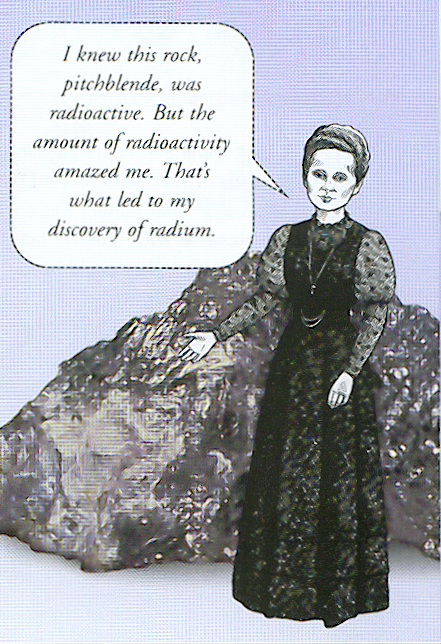Book Review: Marie Curie, A Brilliant Life
One of the most important women whom most people have never heard of was Marie Curie, the brilliant scientist who is still the only woman to ever win the Nobel Prize twice, once in two different disciplines. The story of the brilliance and passion of the Polish scientist is told here in excellent detail and style by Elizabeth MacLeod, author of the illuminating Snapshot Series, which also includes The Wright Brothers and Helen Keller. The book follows roughly the chronology of Marie's life, with examples of her intelligence and determination that serve to illustrate a well-rounded picture of her importance in the history of science. A curious and dedicated child, she had a tremendous curiosity about science, including the tiny world of atoms. Marie Curie has often been called the mother of nuclear science. She and her husband, Pierre, were pioneers in the study of radioactivity, the science of elements and the waves that they give off. In fact, the Curies discovered two new elements, polonium and radium.
The illustrations as a whole are superb, blending photographs and artwork and showing them all in a seamless showcase of inventive layouts. Every page has several things to entertain the eye, which never gets lost or overwhelmed. The book does an excellent job of showing just how hard Marie worked to make herself noticed in the world of science, especially physics, which was dominated by men who thought women belonged in the home and far away from laboratories. A helpful timeline at the back of the book puts her life's events in perspective. Sadly, Marie died as a result of her work. Her yearslong exposure to radioactive elements caused irreparable damage to her body, and she died from radiation poisoning. Her work and success have survived her, however. She is a remarkable story of perseverance and success, and this book does an excellent job of showing all of that. |
|
Social Studies for Kids
copyright 2002–2024
David White



 The most remarkable thing about this book, as is the case with The Wright Brothers and Helen Keller, is the "talking Marie." The pages are filled with a facsimile of a smiling Marie relating aspects of her life "in first person." She appears as a perfectly normal person. She smiles, gestures, and even "leans against things" on the page. This is a wonderful addition to the book and a signature illustration scheme that sets the series apart.
The most remarkable thing about this book, as is the case with The Wright Brothers and Helen Keller, is the "talking Marie." The pages are filled with a facsimile of a smiling Marie relating aspects of her life "in first person." She appears as a perfectly normal person. She smiles, gestures, and even "leans against things" on the page. This is a wonderful addition to the book and a signature illustration scheme that sets the series apart.

